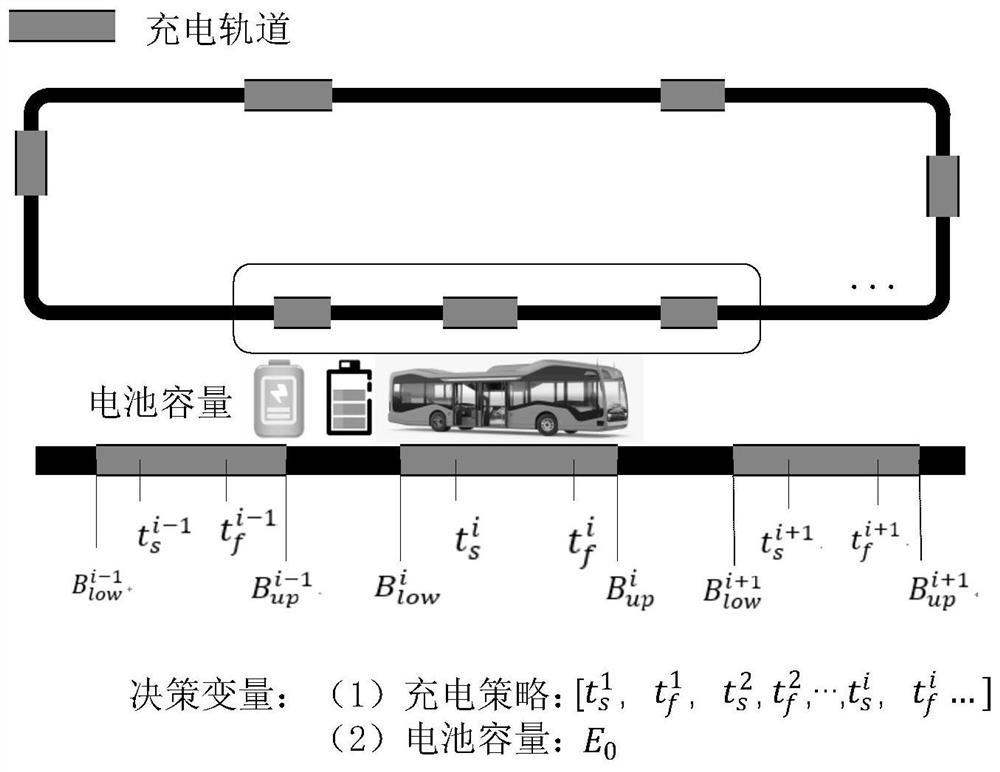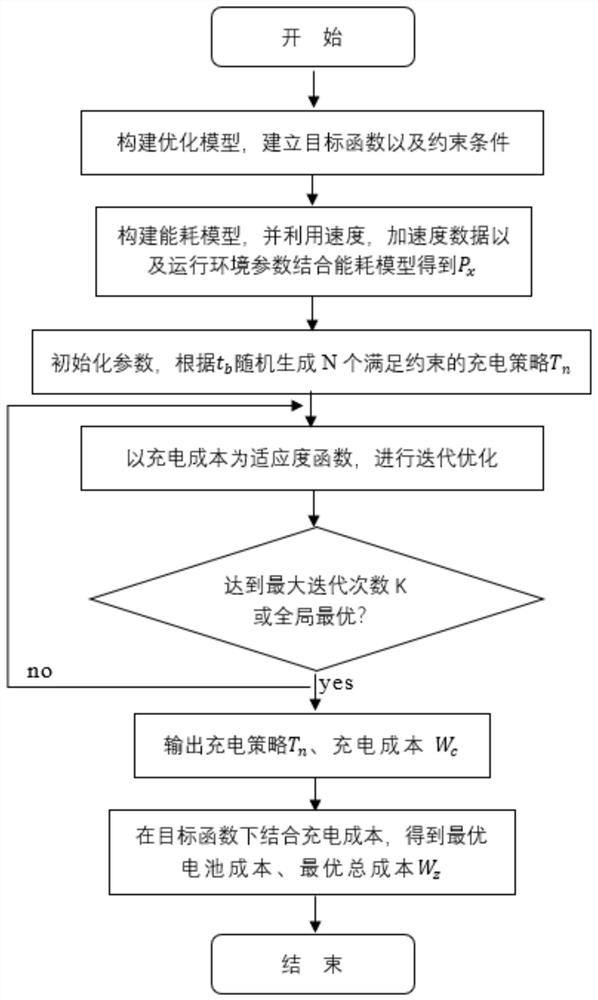Battery cost and charging cost optimization method and application thereof
A technology for cost optimization and remaining battery power, applied in the field of system optimization, can solve the problems of lack of research on charging cost optimization, not considering the impact of the total cost of battery capacity, etc., to reduce charging costs, accurate remaining battery power, and reduce battery costs. Effect
- Summary
- Abstract
- Description
- Claims
- Application Information
AI Technical Summary
Problems solved by technology
Method used
Image
Examples
Embodiment Construction
[0042] The application will be further described below in conjunction with the accompanying drawings.
[0043] The present invention provides an embodiment:
[0044] Such as Figure 1~2 , when the battery cost and charging cost optimization method described in the present invention is applied in the field of bus wireless charging, the specific steps are as follows:
[0045] Step 1: Build an optimization model
[0046] Step 1.1 Establish the optimization objective function
[0047] The battery cost function is as follows:
[0048] W e =k e E. 0
[0049] W in the above formula e is the battery cost, k e is the unit battery cost coefficient, E 0 is the battery capacity.
[0050] The charging cost function is as follows:
[0051]
[0052] W in the above formula c for charging cost, is the start time of the i-th charge, The end time of the i-th charge. y(t) is the electricity price corresponding to different charging moments, p c is the charging power, and n i...
PUM
 Login to View More
Login to View More Abstract
Description
Claims
Application Information
 Login to View More
Login to View More - R&D
- Intellectual Property
- Life Sciences
- Materials
- Tech Scout
- Unparalleled Data Quality
- Higher Quality Content
- 60% Fewer Hallucinations
Browse by: Latest US Patents, China's latest patents, Technical Efficacy Thesaurus, Application Domain, Technology Topic, Popular Technical Reports.
© 2025 PatSnap. All rights reserved.Legal|Privacy policy|Modern Slavery Act Transparency Statement|Sitemap|About US| Contact US: help@patsnap.com



